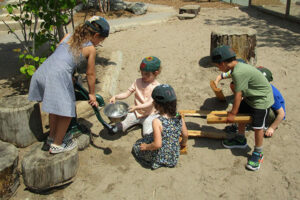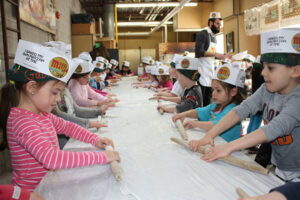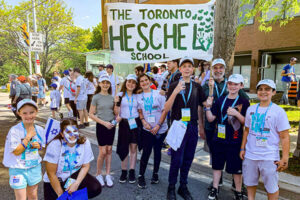- How We Teach

- First Column
- Second Column
- Third Column
- Case Studies

- First Column
- Second Column
- Culture & Community

- First Column
- Second Column
- News & Views

- Admissions

- First Column
- Second Column
- Support Us

- About

- First Column
- Second Column
- Parent Hub
- Attend an Open House
- Take a Tour
- Donate Now
- Calendar
- Blog
- 416-635-1876
- Search
 How We TeachScience
How We TeachScienceWHAT
Children are curious by nature. Be it about birds, trees, flowing water, the stars, or the soil beneath their feet, they are naturally moved to ask questions, make observations, form hypotheses and conclusions without conscious awareness that they are behaving as scientists do. Science classes at Heschel, in contrast to many modern science classes that attempt to fill the heads of the students with the scientific knowledge that has been amassed over centuries, as if from one vessel to another, aims to kindle within students wonder and amazement about while honing the skills necessary to use scientific method for satisfying that curiosity. Science classes at THS are designed for students to implement and experience the scientific method in a variety of situations thereby giving them the tools they need to make sense of their world.
HOW
Thinking as a scientist is the process by which an individual takes notice, observes and asks questions, creates hypotheses and interprets closely to form conclusions. At the THS we take Moshe as an example for how to think like a scientist. We call it ‘Moshe’s Miraculous Method.’ When Moshe was tending to his flock he noticed something extraordinary, a bush burning and yet undamaged by the flames. The Torah teaches us that this is a ‘ness,’ a sign that demands our full attention and any phenomena deserving of scientific inquiry demands the same focus and interest. Science classes at THS are hands-on and as often as possible science classes take place outdoors or involve experimental material that students can touch, hold, and examine closely using their five senses, the best scientific tools available to humankind.


By using their senses students experience a feeling of amazement when they engage with science, they might even experience the sense of amazement that Moshe felt when he encountered the ‘ness’ in the desert. For example, in the grade 8 astronomy unit Space and Time students use simple tools such as a compass, a sundial, and a clinometer to make observations and collect data about the motion of the earth and moon. They follow the scientific method to process the data and eventually create a model of the sun, earth, moon, relationship. The result is a sense of amazement that a few simple sticks and shadows can reveal the patterns of enormous celestial happenings.
WHY
Thinking as a scientist requires taking risks and exploring unknown ideas, a process that requires real courage to pursue authentically. We focus on awe and wonder in our science classes because a sense of awe has been shown to increase our tolerance of uncertainty and openness to unusual ideas. We focus on the scientific method as a way of training the mind to think clearly and logically so that students feel empowered to make sense of their world and feel confident in their conclusions. In this way they participate in the scientific tradition that has been pursued by humanity for millenia.










